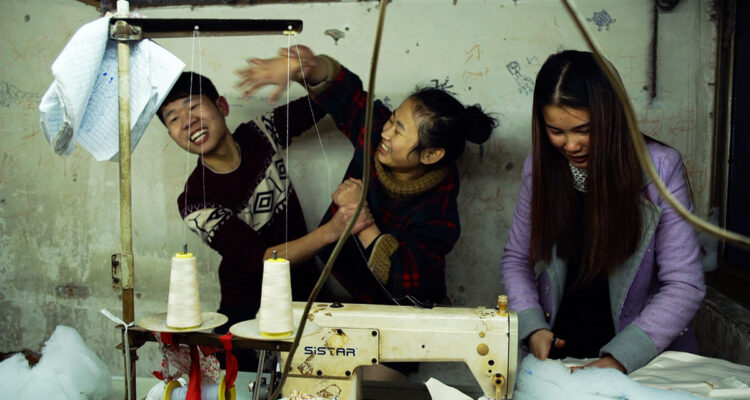CANNES – We are not one to complain about the length of a film. Directors can make an artistic impact specifically with pacing and structure. Often, a longer work of cinema can have a more profound effect on an audience than one cut to the bone to make a preferred runtime. Sadly, that’s not the case with Wang Bing’s ambitious documentary “Youth (Spring)” which debuted at the 2023 Cannes Film Festival this week.
READ MORE: 2023 Cannes Film Festival: 21 Must-See Movies To Watch
Filmed between 2014 and 2019 in Zhili City, about three hours outside of Bejing, China, Bing’s documentary focuses on multiple generations of garment workers who work in workshops (commonly known as sweatshops in the West) to sew together thousands of pieces of clothing a year. Over the course of three and a half hours, Bang both refutes and affirms the criticisms over working conditions for these workers, many of whom are migrants, traveling hundreds of miles (or more) to make money for their families back home. Although considering the changes the world and China have undergone since COVID, this may be more of a historical document than a genuinely contemporary look at the industry (more on that later).
The film first centers on a group of very young workers between the ages of 16 and 24 at one particular workshop. Frankly, their living conditions are not ideal. There is no heat in either their workspace or the rooms they cohabitate a few floors up. They take showers with buckets of hot water and there are three workers per bedroom. Often working past 10 or 12 pm at night, they are quick and energetic and, for lack of a better word seem to be having…fun? They constantly horseplay like they are ten years younger, the boys embarrassingly flirt with the girls (who often are not having it), and music blasts almost constantly in the workroom. There are lots of laughs and lots of late nights and this group seems more concerned with issues such as handling unwanted pregnancies than fighting for better pay. That’s not the case with another group of garment makers who appear to be on the same block.
Slightly older and absolutely more experienced (20 to 35), Bing mostly focuses on this crew’s fight with their employer to get paid more per unit than their rate the previous year. Using his wife and sister as some sort of three-headed monster to fend them off, the owner insists he has no time to renegotiate prices while Bing records him going on a diatribe about, um, having no time for at least 10 minutes. Considering the workers only wanted to revisit the prices of three individual pieces, it’s both comical and pitiful at the same time.
Over two hours in, Bang introduces three very experienced garment workers (easily in their mid-30s) who attempt to leave their current workshop for a new one. Their boss can’t stop them from leaving, but spend hours haggling over what they are owed and whether he can pay them immediately. This trio barely puts up with his shenanigans and are much more confident negotiators than the youngsters we’ve watched previously. It’s an effective contrast and, frankly, one of the more compelling parts of the doc.
No matter who his subject is, Bang spends an inordinate amount of time watching them complete the most mundane tasks. There is a lot of following subjects up and down stairs and down streets for no narrative reason. Bang will showcase a romantic moment between a couple multiple times when the audience has seen this “beat” numerous times before. It’s not shedding new light on these workers’ lives or their predicaments. Bang’s editing choices are so repetitive it borders on an oppressive experience for the viewer. And, trust, we understand and appreciate the power this can have cinematically, in theory. It’s just not coalescing in that manner here.
The kicker, of course, is how long ago “Youth (Spring)” was filmed. It becomes pretty apparent this was recorded at least partially before the pandemic hit and China was rife with stay-at-home orders (the one mask worn in the film sort of gives it away). And with most of the footage shot in the winter months, the fashions the workers are wearing are often generic coats and sweaters. You could easily assume these events occurred over the last year. When the end title card reveals at least a third of the film was shot almost a decade ago it’s more than annoying, it’s simply disingenuous filmmaking. Bang is trying to chronicle the lives of these previously faceless workers whose hands craft the clothes for millions of people around the world. Why is he waiting to provide any appropriate context? What is he truly trying to say about these workers by chronicling their conditions so long ago? It’s simply confounding and makes you wonder if this documentary is telling only half the story of its subjects. Does that mean we’ll have to endure a sequel? [C-]
Follow along with all our coverage from the 2023 Cannes Film Festival.


